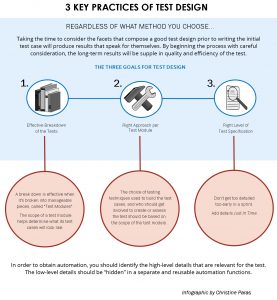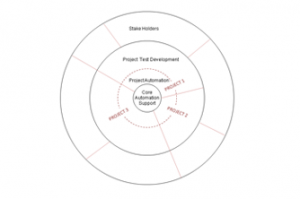The No-Nonsense Guide for How to Write Smarter and Low Maintenance Test Cases Test design is a phrase that is often used when planning testing and test efforts, but I do not believe it is well understood. Also, opinions vary widely about the importance of test design ranging from irrelevant to the crucial ingredient for …
LogiGear Corporation LogiGear Corporation provides global solutions for software testing, and offers public and corporate software-testing training programs worldwide through LogiGear University. LogiGear is a leader in the integration of test automation, offshore resources and US project management for fast and cost-effective results. Since 1994, LogiGear has worked with hundreds of companies from the …
There are many ways to approach test design. These approaches range from checklists to very precise algorithms in which test conditions are combined to achieve the most efficiency in testing. There are situations, such as in testing mobile applications, complex systems and cyber security, where tests need to be creative, cover a lot of functionality, …
An overview of web service testing solutions for traditional or non-technical testers. Much has been written on the technical execution of API tests, yet there are gaps in the details of what tests to design and how to design them. The articles tend to either get too technical too fast, or are too vague and …
Test design is the single biggest contributor to success in software testing. Not only can good test design result in good coverage, it is also a major contributor to efficiency. The principle of test design should be “lean and mean.” The tests should be of a manageable size and at the same time complete and …
As I wrote in various articles, organization is one of the 3 key requisites for successful automated testing, the other two being test design and automation architecture.
Divide and conquer was a strategy successfully employed by ancient Persian kings against their Greek enemies. It is a strategy that can still be used successfully today. Fundamentally, by dividing something into smaller more manageable pieces (in the case of the ancient Persians, they divided the Greek city states), it becomes much more manageable.
Introduction A common issue that I come across in projects is the relationship between test automation and programming. In this article I want to highlight some of the differences that I feel exist between the two.













